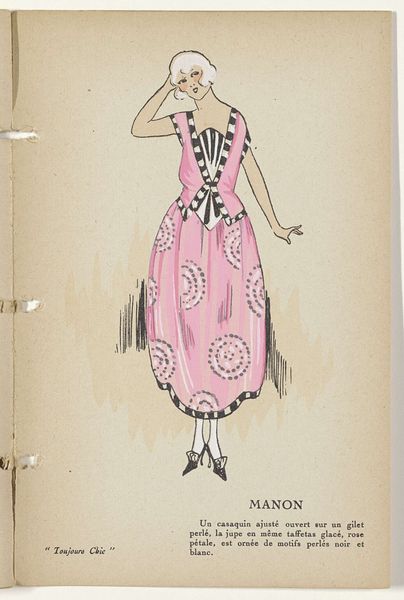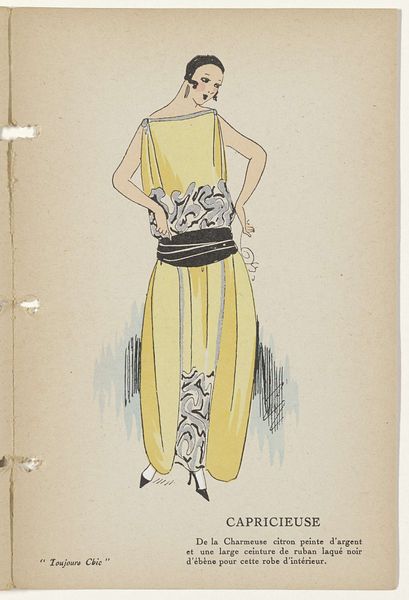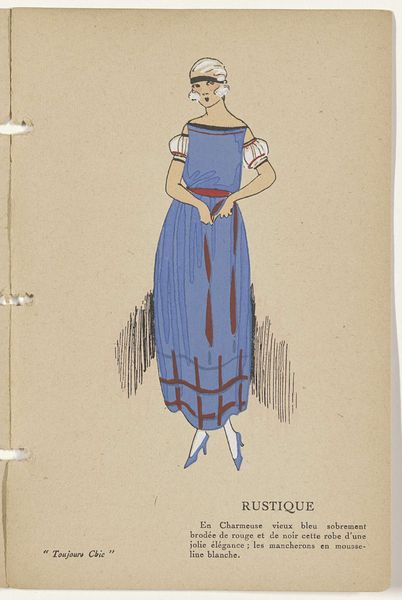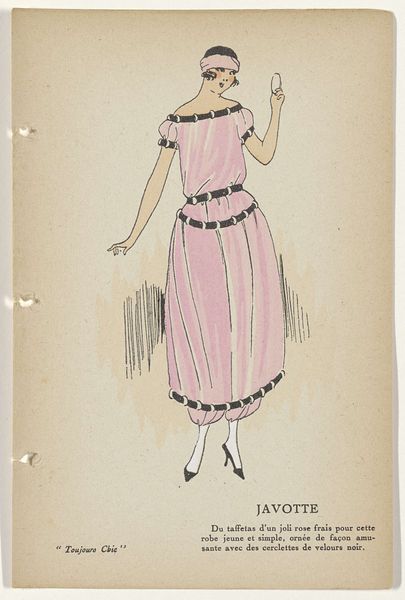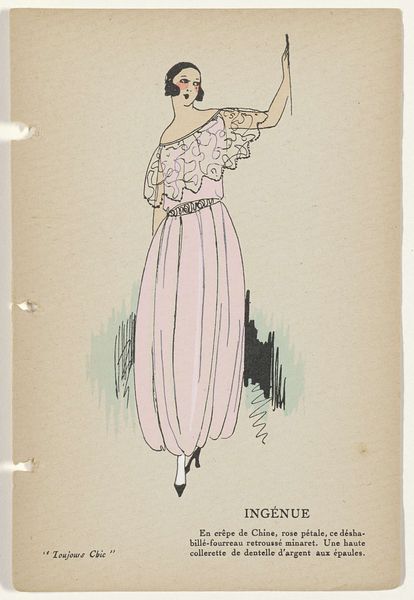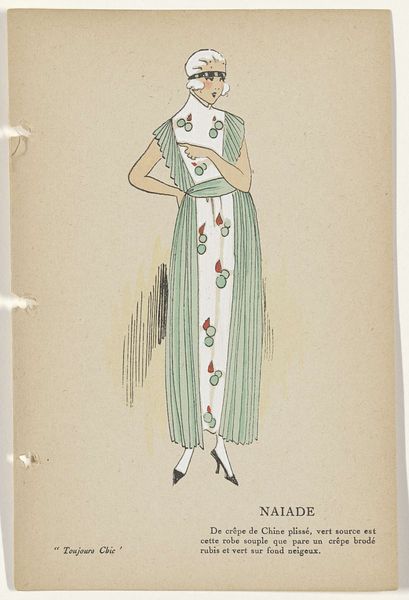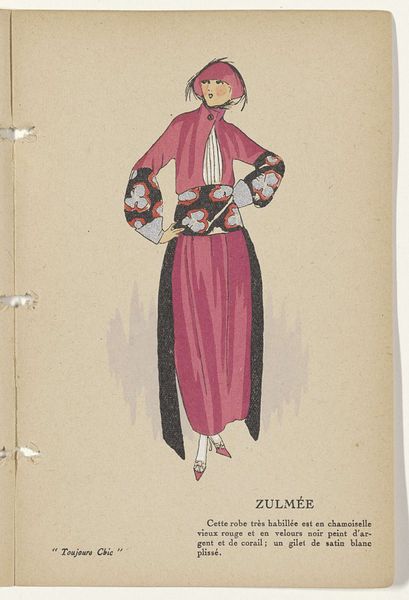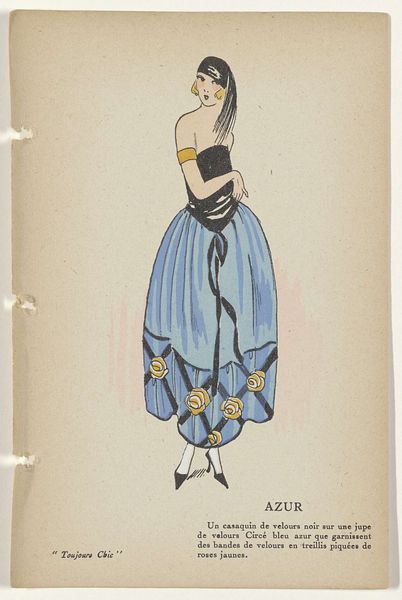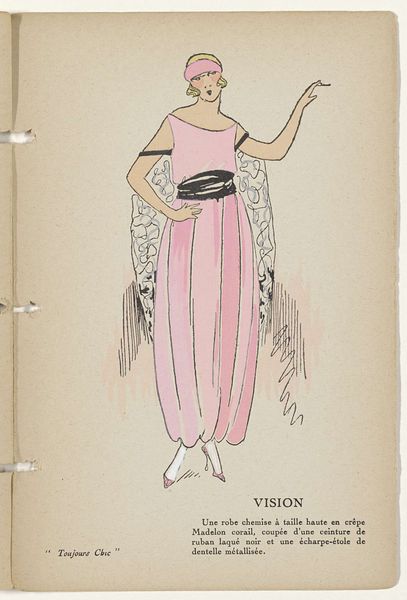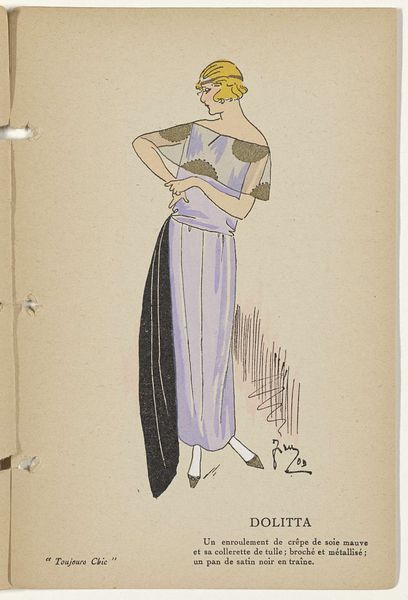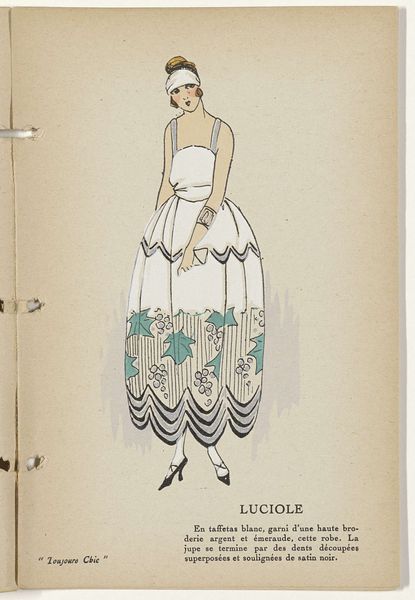
Dimensions: height 180 mm, width 120 mm
Copyright: Rijks Museum: Open Domain
Editor: Here we have "Toujours Chic Les Deshabilles, Hiver 1921-1922: Glycine" by G-P. Joumard, made with watercolour. It's giving me a very direct sense of early 20th century fashion. What stands out to you about this piece? Curator: It’s fascinating to see this fashion illustration not just as a representation of clothing, but as a document of material culture. Consider the description: crepe de Chine, black lacquered satin, coral, mother of pearl. Joumard meticulously details not only the design, but the textiles, the ornamentation, the *stuff* of this dress. What does this emphasis on the material suggest about the intended consumer and the social function of fashion at the time? Editor: It suggests a real focus on luxury, but also craftsmanship. Everything seems so carefully chosen and rendered, highlighting the labor involved. So it is for a specific elite clientele, you suggest? Curator: Precisely. The materials signal a certain economic class and an appreciation for artistry. We might even analyze the source and trade routes of these materials to understand the broader global economy at play. How are these materials, their production, and their eventual consumption tied to systems of labor, and even exploitation, at the time? Editor: Wow, that’s a whole other layer I hadn’t considered. So by focusing on the materials, we can uncover a much richer story about the social and economic context. It goes way beyond just pretty dresses. Curator: Exactly. It’s a reminder that even seemingly frivolous objects like these are embedded within complex networks of production, distribution, and power. They can speak volumes about their time. Editor: I will never look at fashion plates the same way again! I was stuck on the Art Nouveau style. It's so interesting to think about the global systems in place. Curator: The object really becomes a gateway into larger discussions about materiality, labor, and social hierarchy. It prompts critical thinking about consumption and value in different cultural and historical moments.
Comments
No comments
Be the first to comment and join the conversation on the ultimate creative platform.
